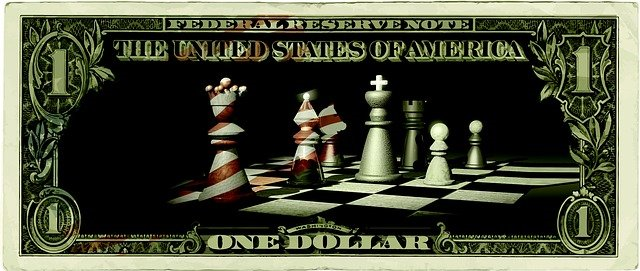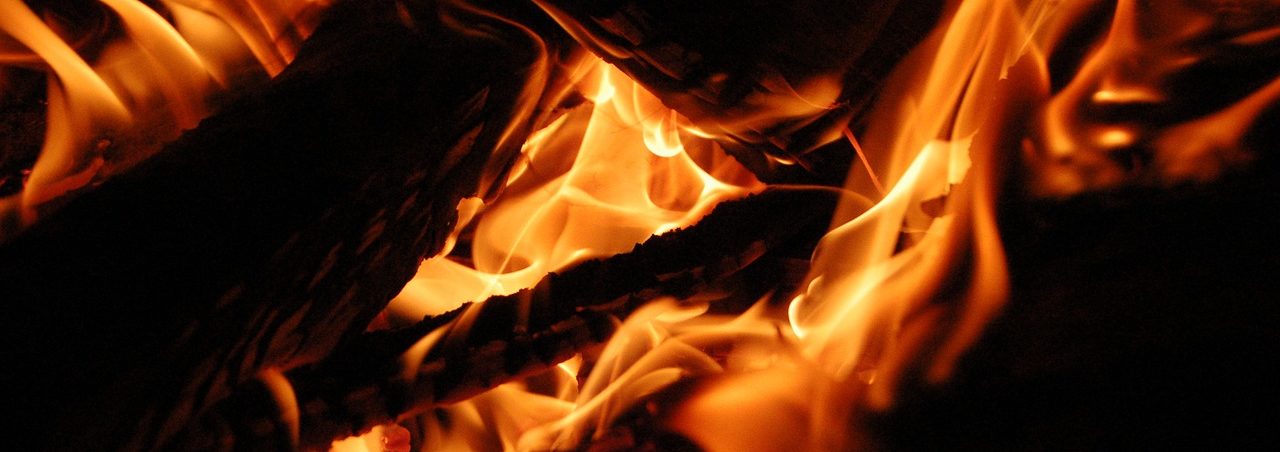
Do you own your bankroll or does the bank own you?
When my husband and I first got together, neither of us was in a good place financially. He was three years out of a divorce and had absorbed the accumulated debt from his first marriage (and made subsequent monetary mistakes under stress) and I was carrying student loans and an atrocious amount of completely useless credit card debt.
We made good money at the time, but what we did with that money was not so good (though it was – and still is – quite common) in that we were stuck with habits we didn’t even realize we had, and in continuing to follow those habits, we weren’t getting anywhere — we were especially not getting ahead.
We both knew we needed to improve our financial situation but were well-enough off that it wasn’t a big priority.
But when we decided to get married, we agreed — suddenly, urgently — that it was, indeed, a BIG priority.
And so — being completely sick and tired of constantly owing money (instead of owning money) — we decided to invest in our debt.
What does it mean to “invest” in debt?
The phrase “invest in debt” seems, at first, contradictory. An ‘investment’ is, after all, something that is supposed to grow your money. And ‘debt’ is something that shrinks it. Right?
Yes.
Which is why, when you have debt — especially unsecured debt that is accumulating compound interest and that you don’t actually own anything as the result of — your money is in a constant state of reduction. It can’t grow, because the demands on it are too high.
Which means:
That $58 dress you bought at Nordstrom using your Visa credit card (with an APR of 8.9%) was subject to a finance charge ($0.50 or 1%, whichever is greater) and will accrue interest — which compounds — unless the entire card balance is paid in full by the end of the next billing cycle.
Which… Of course you can’t pay the whole card balance in full by the end of the next billing cycle (DUH), because you used the card to buy airline tickets last month ($798) and shoes the month before ($137) and oh yeah, there was that medical bill ($162) you didn’t have enough cash to pay so you charged that too, and you’re planning on adding to the ‘owed’ balance next week because your car needs repairs…
Which means if you continue paying only the minimum amount due every month but also keep using the Visa to charge purchases, you will never pay it off.
Whereas, if you invest in your debt…
If, instead of making a purchase with that card, you cut it up and close it out and then pay as much as you possibly can every month toward the balance until the balance becomes zero…
And then do the same thing for your next-highest credit card balance…
And your next…
Eventually, you will not owe anyone anything.
And instead of watching your money shrink, you can actually keep what you make and start to grow your money instead of frittering it away and having nothing to show for it.
But… you are thinking… I don’t HAVE any extra money to throw at my bills.
Yes you do.
I know you think you don’t (because I thought I didn’t either), but you do. You just have to know where to find it.
What we did (hubs and me) was, we sat down and made a list of everything we spent in a day. Individually and together.
We were honest. (If you’re doing this with a partner, you have to be honest. Don’t try to hide things; you’ll never succeed.) And what we found…
Well.
It was HORRIFYING.
Eye-opening, definitely.
But HORRIFYING.
Because all those candy bar purchases and vending machine snacks, the morning coffees and afternoon Cokes, the dinners at/from restaurants multiple times a week, etc…
It all adds up.
We figured out that — because of $2 Cokes bought at the gas station on the way to work and $4 lattes (this was in 2003; you could still get a latte for $4 back then) and $1 vending snacks and lunch bought at the teriyaki joint (instead of made at home and taken to work) and and and, etc. — we were wasting close to $20 a day.
$20 per day x 30 days in a month = $600
Six hundred dollars a month was how much money we ‘didn’t have’.
So we looked at our lowest outstanding credit card balance and said, “We could pay this fucker off in eight months if we put that $600/month toward it instead of all these piddly little purchases” and that’s what we did.
Lowest Balance First
There are financial gurus out there who will tell you to pay toward your highest-interest bill first or to pay off all your secured debt before worrying about unsecured debt, etc.
But I am not a financial guru.
I am just a person who got herself out of debt.
So this is what worked for me.
What worked for me, because I am a results-oriented person and undertook this debt pay-off project during a time in my life where I really needed to *see* progress, was to tackle the lowest balance first. Tackling the lowest-total-amount owed allowed us to pay a single debt down to zero within a matter of months. And then, in addition to the ‘extra $600’ we found, we also had the ‘extra’ of not having a minimum payment due on that now-paid-off account, which meant we could then put $645/month toward the next highest debt amount.
And that’s what we did.
Continuously.
One account at a time.
Until it was gone.
So… you are wondering… Are you completely debt-free then?
No.
I have debt still.
But what I have now — as opposed to what I had before — is manageable debt. It’s debt I conscientiously chose to acquire and the payments I make go toward owning things. I have a mortgage and a car loan. Other than one credit card — which I keep and use as needed (and pay down quickly), mostly to show a continual use of line-of-credit for the purpose of maintaining a high credit score — THAT’S IT.
The older of our two cars has been owned outright for several years (we had a car loan on it when we originally purchased it, but we followed our invest-in-debt strategy and got out from under that loan ASAP; we are doing the same thing right now for my car); we have one store credit card (Lowe’s) which we have used in the past to purchase kitchen appliances at 0% interest for six months (and it was paid off in two months, thank you); we own our computers and phones (I absolutely despise ‘payment plans’ whereby you don’t actually own the electronics you use but just pay a monthly fee for them).
The point being: we are not depriving ourselves of ‘normal’ things. We have the same kinds of things a lot of people in our stage of life have. It’s just that we are not in debt for them.
Goals
It is my goal to be debt-free.
To own, instead of to owe.
To own my house outright, to have no car loan.
And — more than that — to not go into debt for those things again in the future.
It’s a work in progress.
And it will take time.
It will also take discipline.
But everything worthwhile in life requires one or the other.
And I have plenty of both. 🙂
Have you experienced being in debt?
What debt-management strategies have worked for you?


We are currently running a debt paydown system much like this. It takes time when you both have student loans and credit cards, but…eventually. The most liberating step was cutting up the cards.
That’s fantastic — I wish you all the best with it! 🙂
You are exactly right it takes discipline to systematically clear off credit cards – and i really like that phrase ‘invest in you debt’ – I have had a mortgage before but sold – that’s a different story. TY so much for suggesting this topic – I am really surprised at all the excellent posts/information that’s being posted.
May x
May More recently posted…Debt, Stress and Madame Bovary
Discipline is exactly right — for anything to do with money, really, but especially where debt is concerned — you’ll do much better if you practice discipline!
I totally agree, paying off the debt in a disciplined manner is the way to go. Reading this, I think if I ever had multiple credit cards, I would also have started at the lower balance to pay back the debt. We both have a credit card, him a Mastercard and I a VISA. His has to be paid in full every month, but we can let the Visa run up. We never do. When I pay something with it, we make sure we bring the balance back to zero no later than when our salaries come in.
~ Marie
Marie Rebelle recently posted…Hidden memes, or those you don’t know about yet
That’s a smart way to handle it — making sure the balance gets paid in full eliminates having to pay interest over time. 🙂
Pingback: Matters of Money Summary Highlights - SEX MATTERS